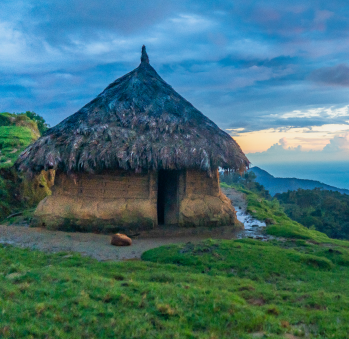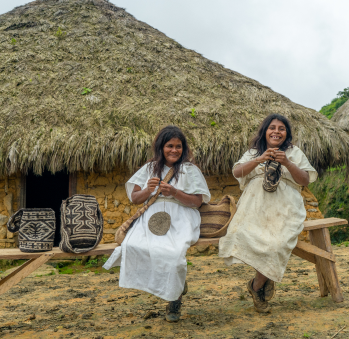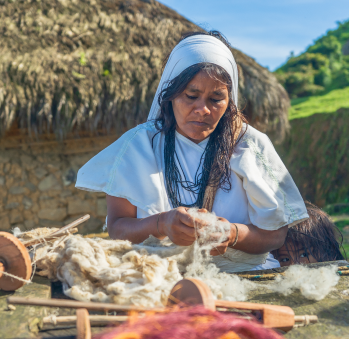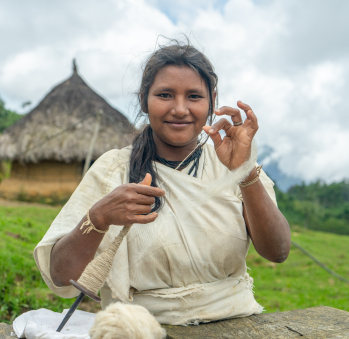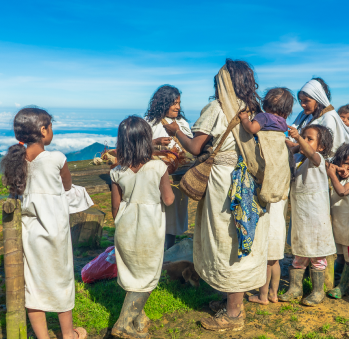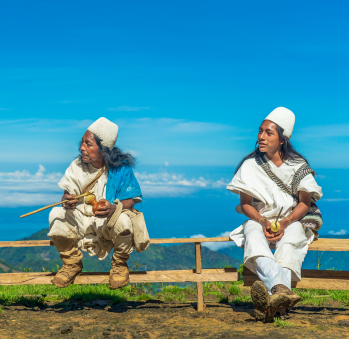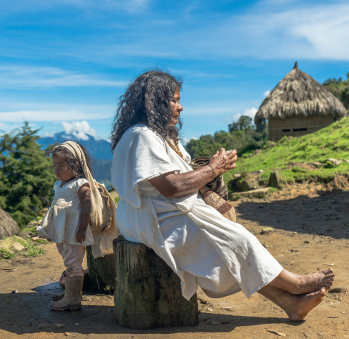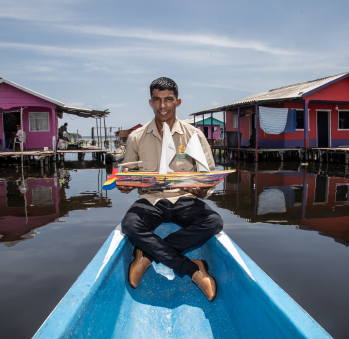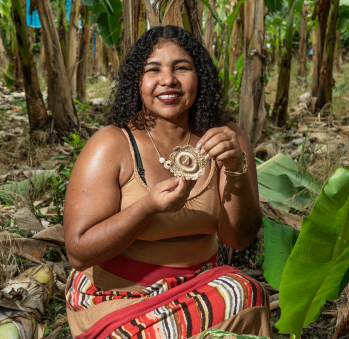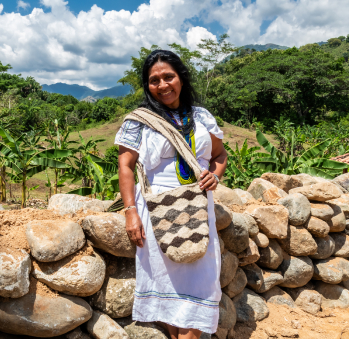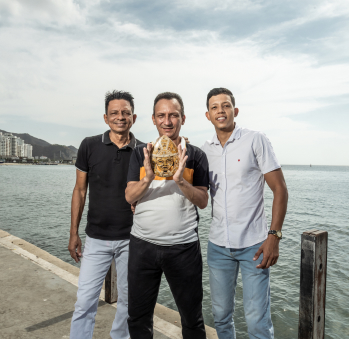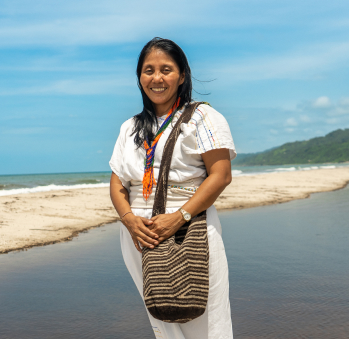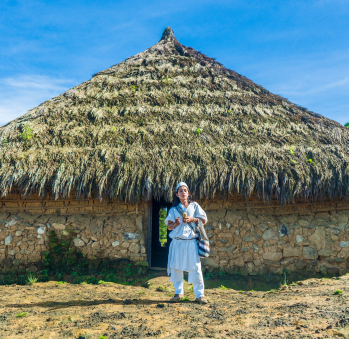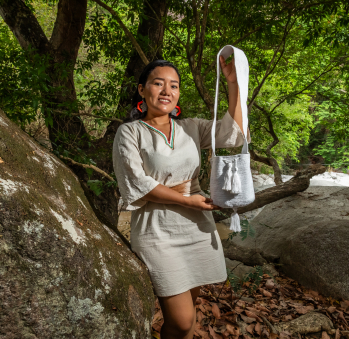Comunidad de Busingeka
Workshop: Comunidad de Busingeka
Craft: Tejeduría
Trail: Magdalena Route
Location: Ciénaga, Magdalena
SCHEDULE YOUR VISIT
Comunidad de Busingeka, Ciénaga, Magdalena
Abel: 300 8671531
“Busingueka means “waking up with everything: nature, mestizos, the sea, and the islands.” It is an impressive place to discover what being an Arhuaco person means in the middle of the Sierra Nevada de Santa Marta, that Sacred House where, according to this indigenous community, human life started, and whose mother and father are the moon and the sun. We are going to move through this vital philosophy, and we will discover a way of grasping the origin in this land. Because, for its ancestral inhabitants, these breathing mountains are a living being: a body that is mother, rivers that are veins, trees and plants that are hairs and muscles, peaks above that are heads. Those who live here, its people or ikus, know that they are the land’s protectors, not its owners. Lastly, the “older brothers,” those who were born of the world’s belly button —the Sierra’s peaks—, have the mission of “looking after and preserving the world, as well as watching over the cosmic cycle so that diseases don’t destroy human life,” as the major mamo, Zäreymakú Amanuense Antonio Pérez, tells.
To get to this town established in 2014, a land recovered by the Sierra’s indigenous communities that were forcibly displaced from them over the years, we have to prepare. This will reveal a deep desire to be there, since it takes six hours to get to the peak of the mountain from Santa Marta and the trip will require a car, motorcycle, and mule. Quite an adventure. It will be cold, so it is necessary to take marsh boots and a hammock. The lodging conditions are far from being what you would expect from traditional tourism, but, in exchange, this will be a unique and dreamy experience. Because there will not only be the Arhuaco community that will welcome us with joy and the will of sharing their cosmogony, home, food, and warmth; but there will be extasy thanks to the landscape of the peaks, lagoons, fogs, and sunsets. It will make any effort worth it. These are not lies, the spiritual pull that is felt there is real.
This will be an immersion in an indigenous culture that sees in craftsmanship a tool with which to communicate its beliefs, since every ware has its use and its meaning. For instance, men wear the zoma tutu: the iconic well-made white fique hat with which they reveal their identity. It symbolizes the snowy peaks and that the mamos use it specially to make offers to Alkwankwa, or the mother of life. Moreover, they make the pestle with which they de-kernel corn with wood. Being a tool used in such a crucial activity —preparing food—, it must first be baptized by the mamos as children are baptized in the clay jars in which the food they pay tribute to is cooked. Likewise, they craft the carrumba and the huso, both tolos with which to spin fique and cotton, as well as the deer bone needles with which they make their mochila bags. They carry the kukku —bijao leaf basket– to store threads or collect the ayu —cotton— with which they weave everything. Because weaving is the way in which they offer us their foundational tales, one of which is told in the base of one of their mochilas through knots that only women know. It tells of how, in the beginning, animals talked, just like us. They did so about nature, the one they swore to protect. Deysi Yasmín Torres Villafaña explains it: “the mochila is everything: it is getting dressed; it is furthering the legacy that mother Ati Nabowa, creator of all the weaves that now exist and that must be safeguarded, left us.” Because, as the elders sung, mochila bags resemble and represent the womb, and they carry what is needed to preserve life. And maybe the great meaning behind being up there, behind making this trip, is understanding that, in fact, life is sacred. “
Craft


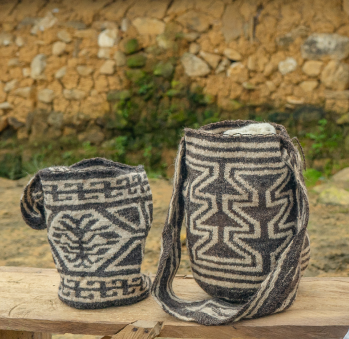
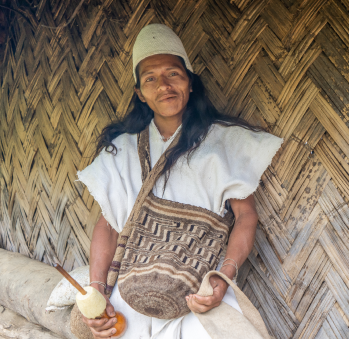
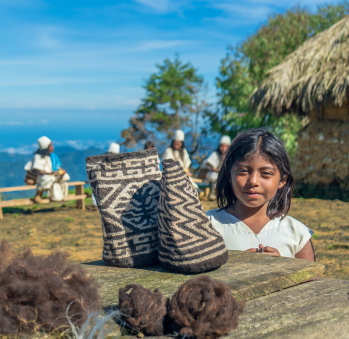





Artisans along the way
Artisans along the way
No puede copiar contenido de esta página









































